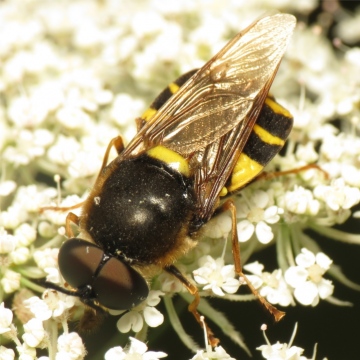Species Account for Stratiomys potamida
Stratiomys potamida Meigen, 1822
Diptera: Larger Brachycera: Stratiomyidae

Reproduction for study and non-profit use permitted, all other rights reserved.
Taxonomic group: soldier flies and allies (Diptera: Larger Brachycera) - County data
View time series maps for Stratiomys potamida
member log-on for taxon report
Essex RDB: Listed
Threat: Regionally Important
Images
upload a new image
Species text
Stratiomys potamida is a spectacular large yellowish soldier fly of wetlands, including fens, damp heaths, damp woodlands, alder carr and coastal landslips and ravines. Records are widely dispersed in England as far north as Northumberland and also into south Wales. Larvae develop in the mud of seepage marsh, and away from seepages, in the mud and standing water amongst vegetation at the edge of ponds and ditches. They probably take three or four years to develop and seem able to tolerate quite severe drying out of sites in summer droughts (Falk, 1991a). References
Habitats
Recorded management for locations with Stratiomys potamida
Recorded substrate and hydrology for locations with Stratiomys potamida
Why not join the Club, register and add a new species page
Interpretation of distribution maps
























